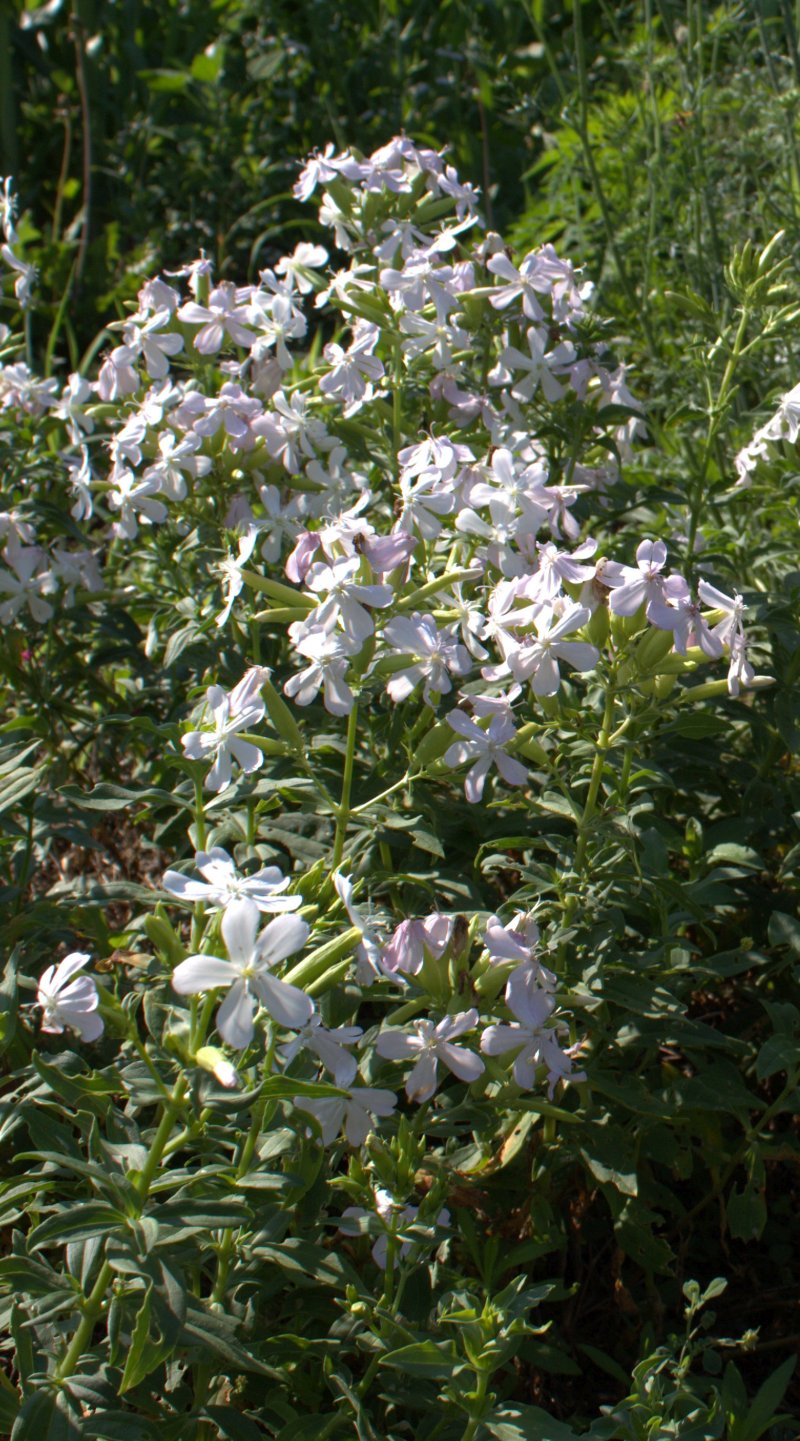The other day I was driving over to an Amish woman’s vegetable stand when I spotted this group of plants that looked like a small version of phlox blooming in white at the edge of a corn field.
How could a phlox be blooming in the heat of summer? I thought phlox was strictly a spring-blooming plant, so of course I had to stop to look a bit closer and find out what these pretty white flowers were.

(Photos taken 10 July 2014.)
Bouncing Bet has been introduced in North America and is native to Europe. It can be found across the United States in waste places and in great masses along roads and at the edges of fields.
The plants stood about a foot tall and may continue growing taller and still
flower as we continue through summer. The entire leaves are paired and somewhat triangular. They have no stem of their own and are supported on sturdy upright stems.

The white flowers were five-petaled and the long petals were slightly notched. The centers of a few of the flowers had shades of pink, but none of the flowers stood out as being pink overall.

The calyx, which envelops the base of the petals and holds the blossoms up in the air, was light green, smooth to the touch, and quite long. It turns out that the long tubular calyx is an identifying character for this plant, called Bouncing Bet, Saponaria officinalis.
Another common name for Bouncing Bet is Soapwort. The plant contains saponins, which if ingested can cause distress to the gastrointestinal tract, so farmers would do well to steer their cows away from it. The same compounds that make the plant toxic also make the plant useful in that the crushed green plant can be used as a substitute for soap.
Peterson’s Edible Plants Field Guide identifies soapwort as poisonous so as not to confuse it with the related, edible Bladder Campion.
On the same day we saw Queen Anne’s Lace, chicory and spotted knapweed blooming in the same vicinity as Bouncing Bet at the edge of that cornfield.